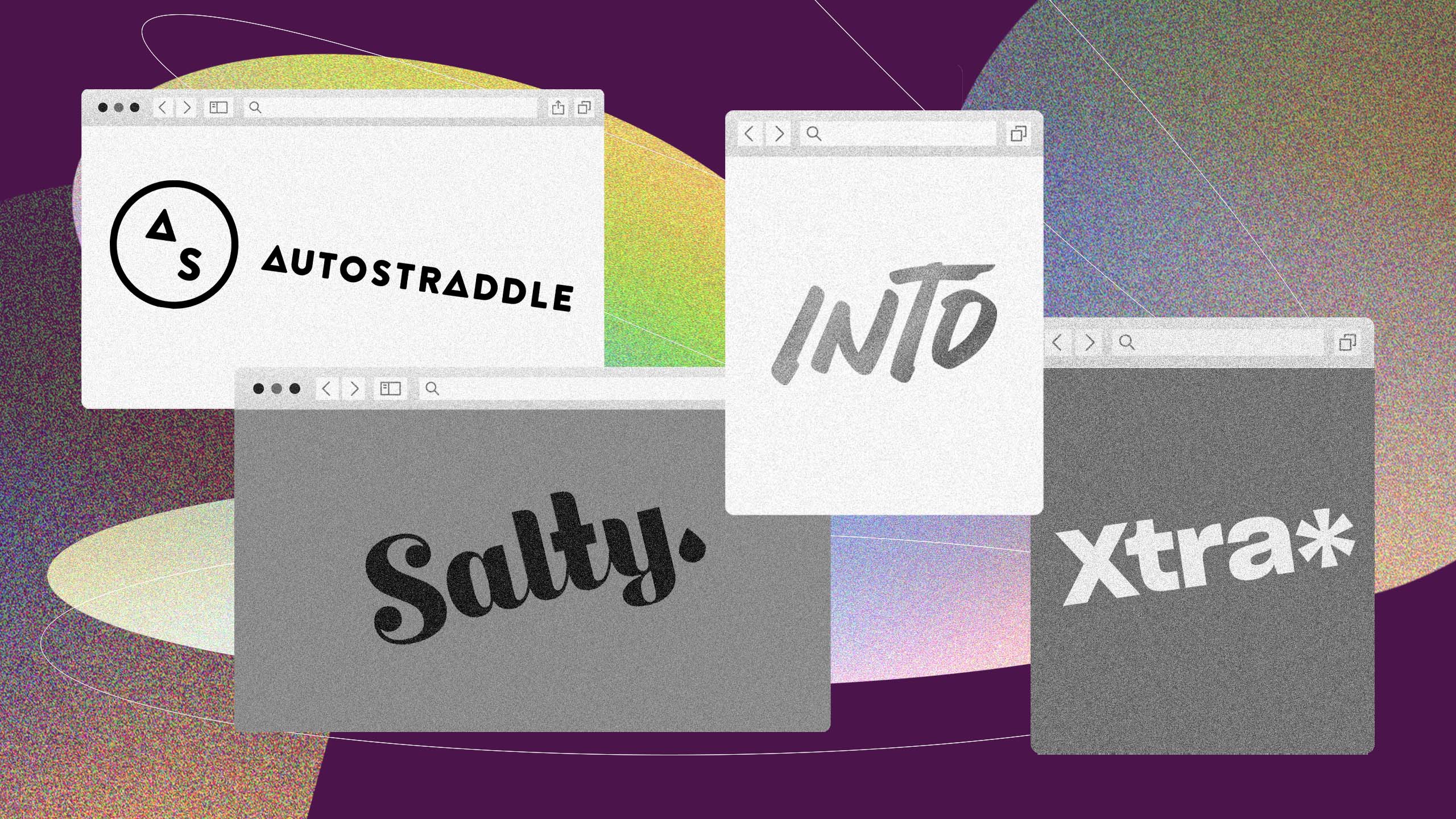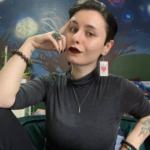Indie queer media outlet Autostraddle—a queer- and trans-run media outlet that has centred the LGBTQ2S+ community, but particularly lesbian, bisexual, queer, trans and non-binary people—has been providing the flexibility for queerness to be fun and light for over a decade. They’ve allowed queer and trans people from all over the world to engage with media that isn’t just about bills taking our rights away, or suffering on a large scale for who we are, being killed or perpetuating the myth that queerness is solely about our sex lives.
“Having queer media outlets means that there are newsrooms devoted to the things queer and trans folks care about, whether that’s important legislation or gay mushrooms. Someone’s looking out for us,” Yashwina Canter, who prefers to go by first name only, an Autostraddle columnist, told Xtra. That level of nuance and variety is not a given when it comes to non-queer outlets—usually ones that cover queer and trans issues in either politics or only on sections of the site that discuss sexuality and gender. The amazing thing about indie LGBTQ2S+ sites like Autostraddle, Xtra, Salty and the revamped INTO, for example, is that they’re not dictated by advertising dollars or old rich white men for the most part. And because of that, there’s the freedom to stop trying to rigidly define what can be queer and trans.
Kayla Kumari Upadhyaya, Autostraddle’s managing editor, for example, recently helmed a 12-part series called Diner Week, full of writing from contributors sharing their most personal, funny and fascinating personal essays on experiences that took place at diners. At first glance, people outside of the queer and trans community might wonder what random stories about diners implicitly have to do with being queer. But at Autostraddle, there’s simply the freedom for queer people to write about whatever they want without the focus being sex or gender—and instead humans who are queer and trans and have thoughts and feelings about many things. It’s near impossible to imagine a more more mainstream LGBTQ2S+ site like Out Magazine publishing anything like that. “Autostraddle is special to me because its independence makes it agile. They’re accountable to the community, rather than to the strata of corporate media conglomerates,” said Yashwina.
Since some recent closures and layoffs in media, Autostraddle staff have been feeling the pressure with queer and trans writers having fewer places to submit work, according to the team. But that’s also why it’s crucial that sites like it continue to make space for more writers and more kinds of writing, period. “Outlets run by queer and trans people aren’t looking for you to be an authority on the queer and trans experience in order to pontificate to or educate the straight masses—they want your perspectives on literally anything. That’s the value,” says Nico Hall, A+ and Fundraising director at Autostraddle. “Queer- and trans-run outlets are places of expansion, in terms of letting people explore their voice, their craft and their interests.” Readers, too, having a space that they feel is theirs, “that isn’t watered down through a cishet viewpoint, to be able to engage on that level of mutual understanding with writers and media” is unique to small queer media outlets as well, Hall emphasized.
That’s why it’s all the more special—and a huge win for independent media at large—that Autostraddle was not only able to meet its fundraising goal for its recent campaign to keep the 13-year-old site afloat, but far surpassed its goal very early on. The site hit its $145,000 goal in five days. And that’s a huge deal, considering who the donors are—largely people without much money. “Over the past three years, we have fundraised twice in 2020, and twice in 2021, both tough, early years of the ongoing pandemic. Our community is not one that is known for being wealthy and in fact, most donations in the past have been $50 or less,” Hall says. If the average queer person is suffering financially, it’s an even bigger deal that they’re using their money to support queer spaces like Autostraddle. But that’s exactly why Autostraddle is free to begin with. “We want to be a resource for everyone, regardless of whether they can financially support us or not,” Hall adds.
That’s why Autostraddle’s team has grown, and why the team chose to expand the types of content on the side—and has taken great care to intentionally educate their audiences through the years. “We grew our email lists and our social media and took care to publish work on the site that our audience, when surveyed, expressed a desire and need for,” Hall says. Building that trust has been possible because of the company’s commitment to being transparent about how they work, who works there and where they spend our money, as well as what their goals for the site are. “The kind of reader who will take a stand and support the media they consume, who would be willing to step up and not just support, but recognize that just like we are a part of the larger media and publishing ecosystem, they are also a part of that as an Autostraddle reader and supporter, is the kind of person we are writing for,” Hall says. Autostraddle has never been about gatekeeping, or establishing rigid fences around specific categories of experience or writing that queer and trans people can stick their feet in or dive into entirely. The site is about and has always been seeking to tear down walls, definitions and binaries that limit us all—including the ones that try to tell us there’s a certain way that media “should” be, or is “supposed” to be run, or even engaged with.
“Queer media outlets are crucial because legacy media is structurally homophobic and transphobic and always has been,” says James Factora, who now works in queer media and has written for Autostraddle, which is special to them because they grew up reading Autostraddle. “Of course, there are LGBTQ2S+ individuals at outlets like the New York Times and the Atlantic who are doing good work, but when both outlets are responsible for giving platforms to thinly veiled transphobic garbage and manufacturing consent for the war on trans kids, it’s hard to see them as a genuine safe space for community conversations,” he says.
Autostraddle, specifically, has been “one of the last great holdouts of the blogging bloom of the aughts/2010s,” as Factora describes it. “I think a lot of media outlets in general are now trying to capture that bloggy, community-centric feel, even though by and large the social media landscape and the demands of traffic-based revenue don’t really allow for that degree of intimacy anymore.” Many more mainstream outlets want “what Autostraddle pioneered, and continues to pioneer,” they say. “They’ve published guides and interviews and pieces that there isn’t really a home for elsewhere on the web—how to deal with queer poly breakups, how to prep for your first queer sex party and more—and they do it all with a commitment to centring Black people, other people of colour and trans people.”
Autostraddle is valuable specifically because of what Factora touched on—that everyone who works there and writes for it comes to the space with “at least some shared understanding, some shared values and goals,” as Hall puts it. “We aren’t explaining ourselves to or performing for a straight audience, so we can really go so much deeper than you might at another publication.”
And that’s precisely why Yashwina is “a firm believer in ‘nothing about us without us.’” It will always be hard to trust outsiders to report accurately and fairly on what’s happening in the community, if it’s even being covered at all, Yashwina, explains. With the current political climate, people in the queer and trans community are terrified of seeing small queer media havens like Autostraddle disappear. Because we need more spaces that are about community instead of capitalism, which is exactly why I’m able to write this piece for Xtra, another queer outlet still eager to build that abundance mindset over the scarcity capitalism and the media industry have tried to condition us into believing.
That’s exactly why Factora wrote an article for Condé Nast’s them in October, in which he boosted Autostraddle’s fundraiser. “Frankly, outlets like them could not exist without Autostraddle having paved the way. The queer media landscape is already so sparse that I don’t think anyone gains anything by trying to outdo each other all the time,” he shared. “One really beautiful thing about the internet is that there’s no limit on space as opposed to print publications, so there truly is room for all of our voices.” That means it’s incumbent upon us, too, and not just sites like Autostraddle, to redistribute power and resources equitably whenever and wherever we can, especially if we’re in media and publishing spaces. Factora expounds that it feels hurtful and sad that they’re one of perhaps a dozen trans people of colour covering LGBTQ2S+ news on a national basis. “I’d love more company, and that necessarily means privileged media workers stepping down or mentoring and connecting people like me.”
And that’s exactly what the people who work at Autostraddle have founded the site on, and what the writing is rooted in. It’s not about “content” as media conglomerates have come to brand it. It’s not about going viral on TikTok. It’s about affording queer and trans people a sacred space to exist without limits imposed on us by the usual systems like white supremacy, Yashwina shared. Treating media as a space that could be abundant and fruitful for many instead of gatekept for the few is a growing trend among younger people taking over the old guard. “It’s about treating media as a coalition rather than a competition.”


 Why you can trust Xtra
Why you can trust Xtra


